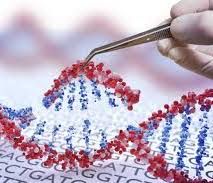AT-GTX-502 Could Provide JNCL Patient Stabilization
Descriptive findings from the phase 1/2 study allude to promise for the gene therapy in the rare pediatric disorder.

The first clinical gene therapy assessment for juvenile neuronal ceroid lipofuscinosis (JNCL) show adenovirus-associated virus serotype 9 vector (AT-GTX-502) was generally well tolerated in the young patient population, and warrants longer assessment beyond the new phase 1/2A findings.
In late-breaking data presented at the WorldSymposium 2021 Virtual meeting this week, a team of US investigators from Amicus Therapeutics reported positive outcomes from the open-label, dose-escalation trial observing the investigative gene therapy in patients aged 3-11 years old with JCNL.
The severe, child-onset neurodegenerative disorder is caused by CLN3 mutations and can lead to blindness, motor impairment, learning difficulties, epilepsy, and eventually death in the patient’s third decade. There are currently no other therapies regulated or investigated for JCNL.
“Because pathogenic CLN3 variants predominately cause a loss or reduced level of functional protein, a promising therapeutic approach is gene transfer of corrected CLN3, leading to production of functional protein,” they wrote.
The newly reported data is preliminary results from this first gene therapy study in classic JNCL, which is seeking the observed efficacy and safety of AT-GTX-502.
Investigators included a low-dose and high-dose cohort in the trial, with the high-dose cohort dosed ≥6 weeks later than the low-dose cohort to allow a safety review of the latter group. Their safety assessment included dose-limiting toxicity, adverse events, vital signs, physical and neurological examinations, blood and urine laboratory parameters, electrocardiography, immunologic assessments, and viral shedding.
The team also assessed patient scores on the Unified Batten Disease Rating Scale (UBDRS), a metric developed specifically for monitoring JNCL progression on physical, behavioral, seizure, and capability subscales. The primary efficacy assessment for the trial was the physical subscale of UBDRS.
Preliminary findings were descriptive data, without statistical analysis.
Eligible patients had a UBDRS physical impairment score of ≤7 who could walk independently for ≥50 feet.
Investigators based dosing on qPCR, with 3 patients receiving a single intrathecal injection of AT-GTX-502 at 6x1013 vector genomes (vg), and 1 receiving 1.2x1014 vg—designating low-dose and high-dose treatment arms, respectively.
The trio of low-dose patients were 2 boys and 1 girl, aged 114, 105, and 71 months at enrollment, respectively. The high-dose patient was a boy aged 120 months. Follow-up durations were 20.7, 16.8, 15.6, and 8.7 months, respectively.
Patients were evaluated at screening, days 7, 14, 21, and 30, then at months 3, 6, 9, 12, 18, 24, 30, and 36.
Mean annual change in UBDRS physical impairment score was 0.07 among low-dose patients, versus the mean natural history rate of 2.86, suggesting AT-GTX-502 may be associated with early progress to patient stabilization.
Most treatment-emergent adverse events were mild or moderate and unrelated to AT-GTX-502, though 1 patient experienced a treatment-related serious adverse event of elevated alanine aminotransferase levels that was resolved with three-month steroid treatment.
The outcomes provide prospective hope for the currently under-addressed pediatric patient population.
“Preliminary results suggest that AT-GTX-502 was generally well tolerated and support further evaluation,” they wrote.